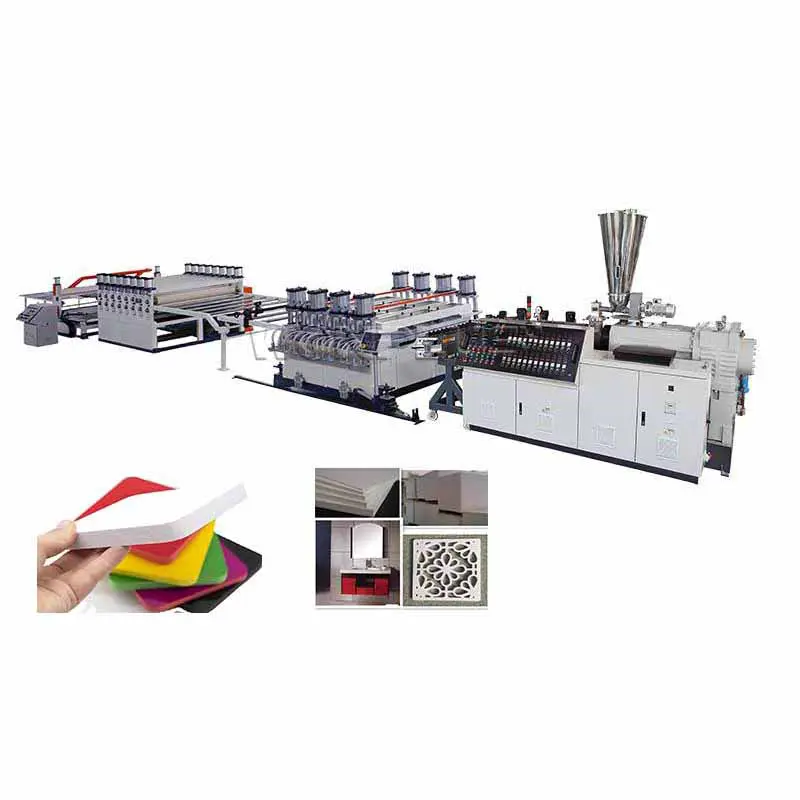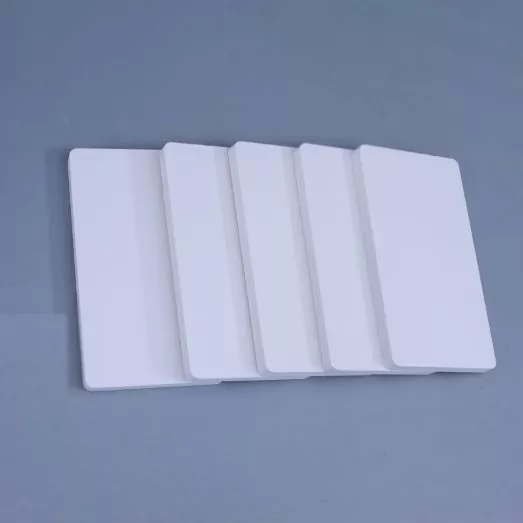PVC Foam Board Production Line: A Comprehensive Guide
2025-05-19
PVC foam boards, widely used in advertising, construction, and interior design, are lightweight yet durable materials. Their production combines advanced polymer science and precision engineering. Below, we break down the manufacturing journey from raw materials to finished boards.

1. Raw Material Preparation
(Suggested image: Raw materials and mixing equipment)
The PVC foam board production line begins with PVC resin, the primary component. The key additives of it includes:
Plasticizers to enhance flexibility
Stabilizers to prevent thermal degradation
Foaming agents to create cellular structure
Fillers (e.g., calcium carbonate) for rigidity
Pigments for coloration
These ingredients are precisely weighed using automated systems to ensure batch consistency. A typical ratio is 60-70% PVC resin, 15-20% fillers, and 5-10% additives.
2. Mixing and Compounding
Materials enter a high-speed mixer where temperatures reach 100–120°C. This step achieves:
Homogeneous blending of powders
Partial gelation of PVC particles
Activation of foaming agents
The mixture is then cooled to 40–50°C to prevent premature foaming and transferred to storage silos.
3. Extrusion Process
The heart of PVC foam board is a twin-screw extruder divided into zones:
Feeding zone: Material enters at 150–160°C
Plasticizing zone: Temperature rises to 170–190°C, melting PVC
Metering zone: Pressure builds to 200–250 bar
Die head: Shapes molten PVC into a continuous slab
Critical parameters like screw speed (15–25 RPM) and melt pressure are monitored via PLC systems.
4. Foaming Stage
As the material exits the die, dissolved gas from decomposing foaming agents (triggered at 160–200°C) expands rapidly. This creates a closed-cell structure of PVC foam board with:
Density: 0.31–0.8 g/cm³
Cell size: 50–200 μm
Compression strength: 3–10 MPa
5. Calendering and Cooling
The foamed slab passes through a three-roll calender:
Adjusts thickness (common range: 3–20 mm)
Imprints surface textures (glossy/matte)
Rapidly cools material below 60°C using water-cooled rollers
This stage determines final dimensional stability and surface quality.
6. Cutting and Finishing
Automated systems handle:
Longitudinal cutting: Adjusts board width (standard: 1220/1560 mm)
Cross-cutting: Sets lengths (2440/3050 mm common)
Edge trimming: Removes irregular borders
Boards undergo UV coating (optional) for weather resistance or digital printing compatibility.
7. Quality Control
Key tests include:
ParameterMethodStandard
DensityISO 1183±0.05 g/cm³
Flexural strengthASTM D790>15 MPa
Fire resistanceUL94V-0/V-1 rating
Surface flatnessLaser scanning≤0.5 mm/m

Applications
Outdoor signage (5–8 year UV resistance)
CNC-carved decorative panels
Moisture-resistant bathroom partitions
Lightweight truck liners
Environmental Considerations
Modern plants implement:
Closed-loop water recycling (saves 30–40% water)
VOC abatement systems (95% emission reduction)
Regrind protocols (up to 15% scrap reuse)


